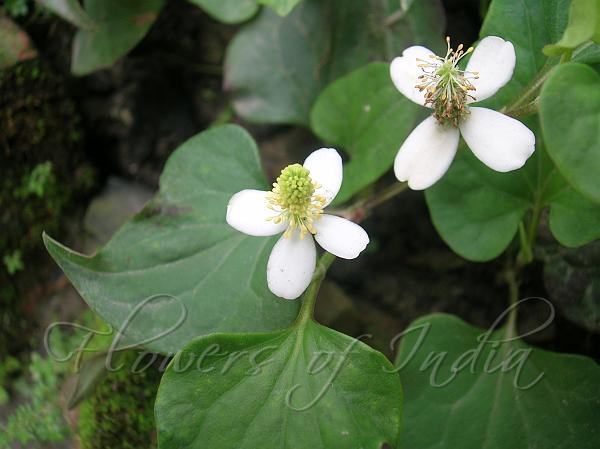|
| Chameleon Plant |
|

|

| File size | 1050942 |
| Original date | 5/17/07 4:43 PM |
| Resolution | 2048 x 1536 |
| Flash | Flash did not fire, auto |
| Focal length | 8.0mm |
| Exposure time | 1/10s |
| Aperture | 3.2 |
| Focus Distance | |
| Metering Mode | Multi-segment |
| Camera make | NIKON |
| Camera model | E3700 |
| Sensor type |
|
|
|
|
Photo: |
Botanical name: Houttuynia cordata Family: Saururaceae (Lizard-tail family)
Synonyms: Houttuynia foetida, Polypara cordata
Synonyms: Houttuynia foetida, Polypara cordata
Chameleon Plant is a herbaceous perennial plant
growing to between 20 and 80 cm. The proximal part of the stem is
trailing and produces adventitious roots, while the distal part of the
stem grows vertically. The leaves are alternate, broadly heart-shaped,
4-9 cm long and 3-8 cm broad. Flowers, growing usually in summer, are
greenish-yellow, borne on a terminal spike 2-3 cm long with 4-6 large
white petal-like bracts. It is grown as a leaf vegetable, particularly
in Vietnam, and is used as a fresh herbal garnish. The leaf has an
unusual taste that is often described as 'fishy' (earning it the
nickname "fish mint"), so it is not enjoyed as universally as basil,
mint, or other more commonly used herbs. In NE India, particularly
Meghalaya, it is locally known as ja mardoh and used in salads or
cooked with other vegetables. In Manipur, it is known as
tokning-khok and is leaves and roots are used as garnish over
eromba and singju, ethnic
side dishes. In Assam it is called Masunduri and
popular mostly among the tribes. It is taken raw as salad and cooked
along with fish as fish curry. Chameleon Plant is found in the
Himalayas at altitudes up to 2500 m.
Medicinal uses: Leaf-extract is used in
dysentry, rhizome is used i stomach ulcers. Boiled extract of rhizomes
is taken for muscular pains due to overstrain.
Leaf-extract is used in
dysentry, rhizome is used i stomach ulcers. Boiled extract of rhizomes
is taken for muscular pains due to overstrain.
Medicinal uses:
 Leaf-extract is used in
dysentry, rhizome is used i stomach ulcers. Boiled extract of rhizomes
is taken for muscular pains due to overstrain.
Leaf-extract is used in
dysentry, rhizome is used i stomach ulcers. Boiled extract of rhizomes
is taken for muscular pains due to overstrain. | Identification credit: Tabish | Photographed in Imphal, Manipur. |
• Is this flower misidentified? If yes,